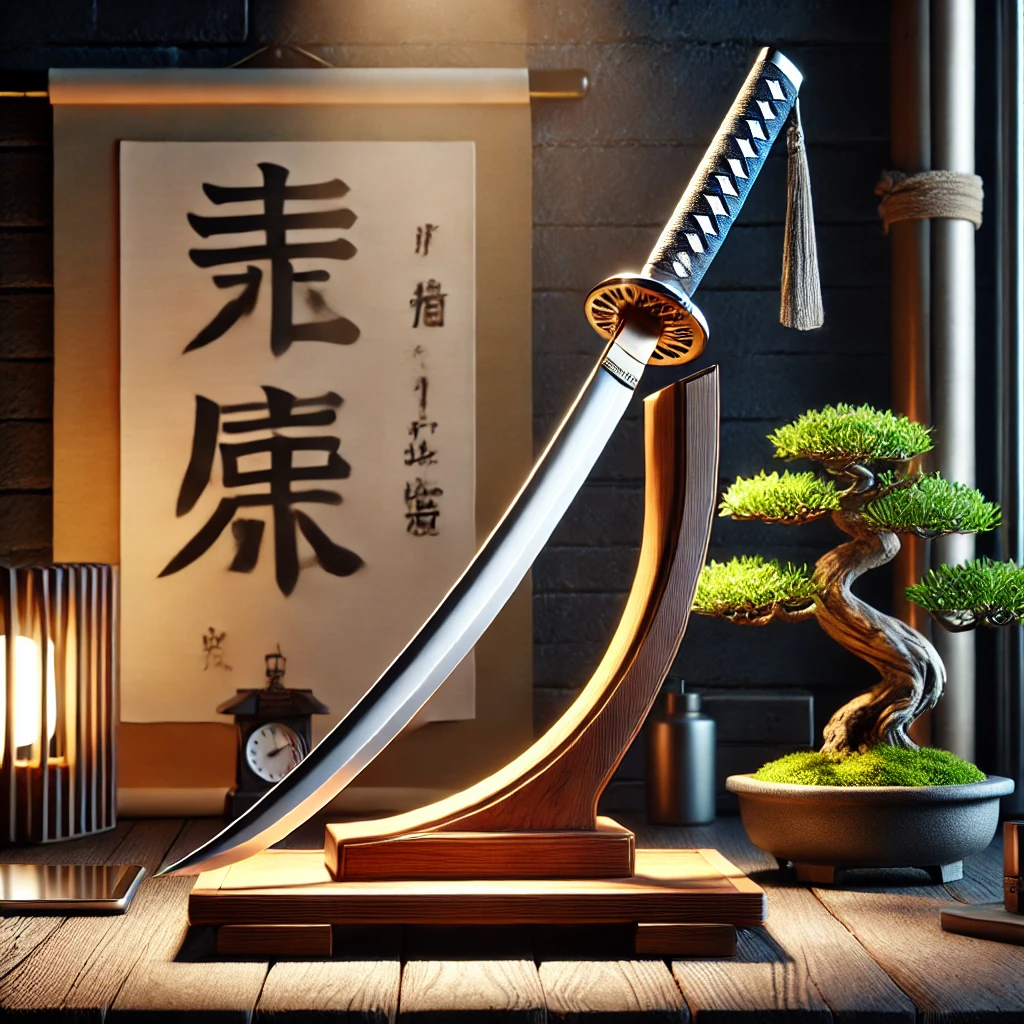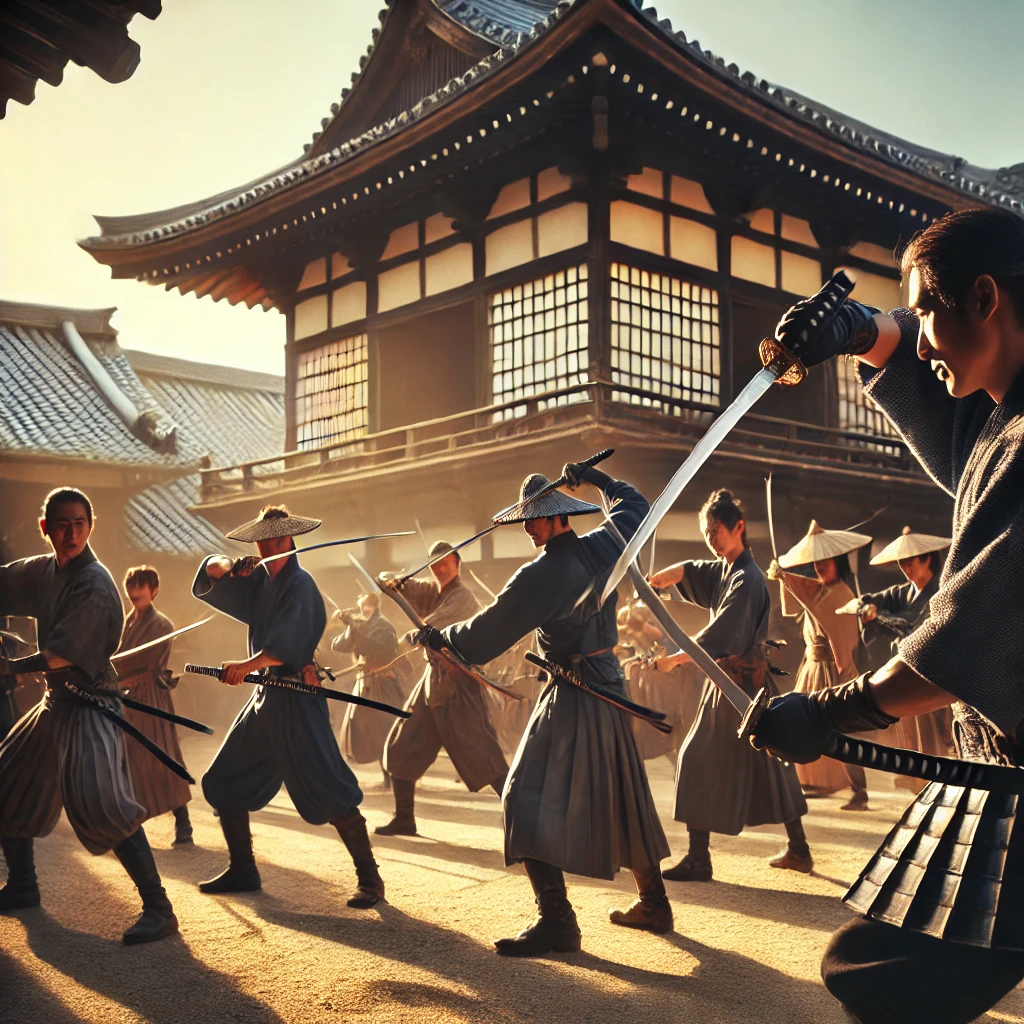The katana, a revered samurai sword, has experienced a resurgence in the 21st century. This resurgence is not merely a cultural phenomenon. It reflects deeper societal shifts and a renewed appreciation for craftsmanship. Today, the katana symbolizes both tradition and modernity. Its resurgence highlights the sword’s enduring significance in contemporary culture.

I. Global Interest in Japanese Culture
To begin with, the katana’s resurgence is driven by a renewed interest in Japanese culture. Globalization has made cultural exchange more accessible. As a result, people worldwide have discovered the richness of Japanese traditions. The samurai, with their iconic katana, embody the spirit of honor and discipline. Consequently, the katana has become a symbol of these values.
II. Craftsmanship in the Age of Mass Production
Furthermore, the katana’s craftsmanship appeals to modern audiences. In an age of mass production, handmade items hold special value. The katana, forged by skilled artisans, represents the pinnacle of craftsmanship. This appeal is particularly strong among those who appreciate the artistry and precision involved. The katana’s intricate design and flawless execution captivate both collectors and enthusiasts.
III. Martial Arts and the Katana’s Role
Moreover, the resurgence of martial arts has contributed to the katana’s popularity. Martial arts schools around the world teach the art of swordsmanship. Practitioners seek to connect with the samurai’s discipline through their training. The katana sword, with its historical significance, serves as a powerful tool for this connection. Consequently, demand for authentic katana swords has risen.
IV. The Influence of Popular Media
Additionally, popular media has played a significant role in the katana’s resurgence. Films, video games, and anime frequently feature the katana. These portrayals have introduced the sword to younger generations. Characters wielding katanas often represent strength, honor, and skill. This media exposure has fueled interest in the katana sword, making it a cultural icon.
V. Collecting and Preserving History
In addition, the katana’s resurgence is evident in the world of collectors. Antique katanas have become highly sought-after items. Collectors appreciate the historical and cultural value of these swords. They often see the katana as a connection to the past. The rarity and craftsmanship of antique katanas have driven up their value, making them prized possessions.
VI. Modern Swordsmiths and the Preservation of Tradition
Moreover, modern swordsmiths continue to craft katanas using traditional methods. These artisans preserve ancient techniques while catering to contemporary tastes. Their work ensures that the katana remains relevant in today’s world. By blending tradition with innovation, these swordsmiths contribute to the katana’s ongoing resurgence.
VII. Evolving Symbolism in the 21st Century
Furthermore, the katana’s symbolism has evolved in the 21st century. While it remains a symbol of samurai honor, it also represents resilience and adaptability. The katana has become a metaphor for overcoming challenges. Its sharpness and strength symbolize the ability to cut through obstacles. This modern interpretation resonates with people facing difficulties in their lives.
VIII. Historical Reenactments and Living History
In addition, the katana’s resurgence is linked to the growing interest in historical reenactments. These events allow participants to experience samurai culture firsthand. The katana, as a central element of samurai life, plays a crucial role. Participants wield katanas in carefully choreographed battles, bringing history to life. This immersive experience deepens their appreciation for the sword and its legacy.
IX. Debates on Cultural Appropriation
Moreover, the katana’s resurgence has sparked debates about cultural appropriation. As the sword becomes popular worldwide, questions arise about its use outside Japan. Some argue that the katana should be respected as a cultural artifact. Others believe that its global appeal demonstrates the universality of its symbolism. These debates highlight the complexity of the katana’s role in the modern world.
X. The Katana in Modern Art and Design
Additionally, the katana has found a place in modern art and design. Artists and designers draw inspiration from the sword’s sleek lines and historical significance. The katana’s influence is visible in various creative fields, from fashion to sculpture. This cross-disciplinary appeal further cements the katana’s place in contemporary culture.
XI. Ceremonial Uses in Contemporary Society
Furthermore, the katana’s resurgence has led to its use in ceremonial contexts. Modern ceremonies often incorporate the katana as a symbol of honor and commitment. For example, some weddings feature the exchange of katanas as a sign of mutual respect. This ceremonial use reflects the sword’s enduring cultural significance.

XII. Conclusion
In conclusion, the katana’s resurgence in the 21st century is a multifaceted phenomenon. It reflects a blend of tradition, craftsmanship, and modern cultural trends. The sword’s appeal spans across martial arts, media, collecting, and art. As the katana continues to captivate global audiences, its legacy grows stronger. The resurgence of the katana demonstrates its timeless relevance and its ability to adapt to new contexts. In an ever-changing world, the katana remains a powerful symbol of honor, strength, and resilience.